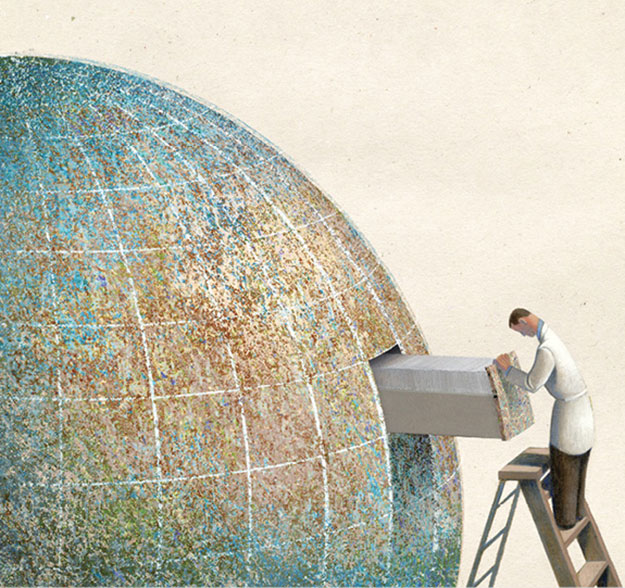Winter 2016: Energy Evolution
From carbon dioxide conversion to landfill mining, researchers at UTA are seeking viable alternative energy options.
Skip to content. Skip to main navigation.
From carbon dioxide conversion to landfill mining, researchers at UTA are seeking viable alternative energy options.
Found in everything from space shuttles to dental fillings, composite materials have thoroughly infiltrated modern society. But their potential is still greatly untapped, offering researchers ample opportunity for discovery.
Within the particle showers created at the Large Hadron Collider, answers to some of the universe’s mysteries are waiting.
Model systems like pigeons can help illuminate our own evolutionary and genomic history.
UT Arlington's tiny windmills are bringing renewable energy to a whole new scale.
The stability of our highways, pipelines, and even manholes is reaching a breaking point.
Scientists believe they have discovered a subatomic particle that is crucial to understanding the universe.
UT Arlington researchers unlock clues to the human body’s most mysterious and complex organ.
UT Arlington researchers probe the hidden world of microbes in search of renewable energy sources.
Wounded soldiers are benefiting from Robert Gatchel’s program that combines physical rehabilitation with treatment for post-traumatic stress disorder.
Tiny sensors implanted in the body show promise in combating acid reflux disease, pain and other health problems.
Nanotechnology researchers pursue hybrid silicon chips with life-saving potential.
Biomedical engineers combat diseases with procedures that are painless to patients.

When manufacturing a device like a cellphone or satellite, it all comes down to picking the right materials. But searching through the huge amount of available data is difficult and time-consuming.
To help speed up the process, Junzhou Huang, a computer science and engineering assistant professor, is developing a tool that lets manufacturers efficiently sift through data about the genetic structures of materials.
"What's happened in the past is that designers have had to simply try what they think might be the best materials, but don't know for sure," says Dr. Huang. "We need to be smarter, more efficient, and more effective in discovering new materials to build whatever we want."
Every material has a genome, but computational challenges exist when determining which material is best for a certain device. The data the systems must search to figure that out is too complicated and too vast to do so with any consistency.
That's where Huang's new framework would come in.
Aided by a $250,000 National Science Foundation grant, he and Feiping Nie, a research assistant professor in the Department of Computer Science and Engineering, are designing scalable algorithms and a computational framework that can sort through data that details the complete sets of genes present in various materials. By understanding the genetic makeup of materials, manufacturers can then find the ideal foundations for their creations.
The project is part of the national Materials Genome Initiative, which focuses on discovering, manufacturing, and deploying advanced materials faster, cheaper, and more efficiently than present-day technology can.
Illustration by Jon Krause